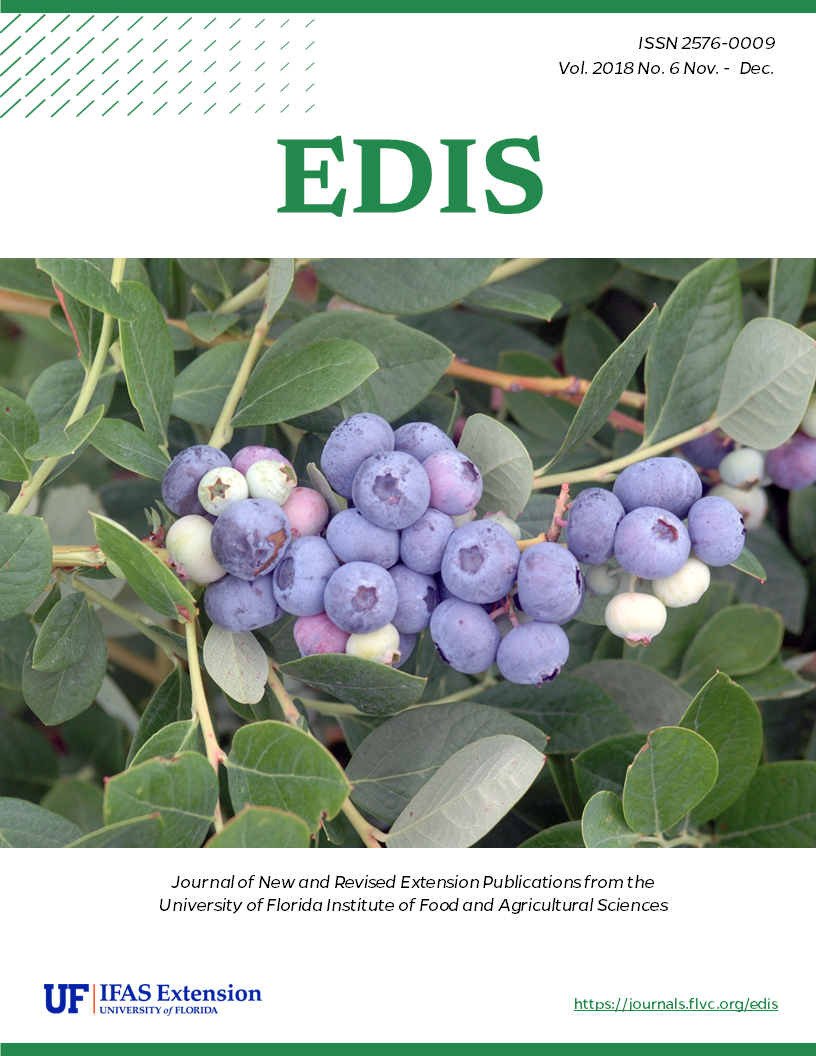Abstract
Includes: Introduction - Distribution - Description - Life Cycle and Biology - Hosts - Economic Importance - Management - Selected References
Also available in the Featured Creatures collection at: http://entnemdept.ufl.edu/creatures/NEMATODE/Pasteuria_penetrans.html
References
Atibalentja N, Jakstys BP, Noel GR. 2004. "Life cycle, ultrastructure, and host specificity of the North American isolate of Pasteuria that parasitizes the soybean cyst nematode, Heterodera glycines." Journal of Nematology 36(2): 171-180.
Bekal S, Borneman J, Springer J, Giblin-Davis RM, Becker JO. 2001. "Phenotypic and molecular analysis of a Pasteuria strain parasitic to the sting nematode." Journal of Nematology 33(2-3): 110-115.
Bishop A H, Gowen SR, Pembroke B, Trotter JR. 2007. "Morphological and molecular characteristics of a new species of Pasteuria parasitic on Meloidogyne ardenensis." Invertebrate Pathology 96: 23-33. https://doi.org/10.1016/j.jip.2007.02.008
Chen ZX, Dickson DW, Freitas LG, Preston JF. 1997. "Ultrastructure, morphology, and sporogenesis of Pasteuria penetrans." Phytopathology 87(3): 273-283. https://doi.org/10.1094/PHYTO.1997.87.3.273
Chen ZX, Dickson DW, McSorley R, Mitchell DJ, Hewlett TE. 1996. "Suppression of Meloidogyne arenaria Race 1 by soil application of endospores of Pasteuria penetrans." Journal of Nematology 28(2): 159-168.
Davies KG, Rowe J, Lopez RM, Opperman CH. 2011. "Re-evaluation of the life-cycle of the nematode-parasitic bacterium Pasteuria penetrans in root-knot nematodes, Meloidogyne spp." Journal of Nematology 13(7): 825-835. https://doi.org/10.1163/138855410X552670
Environmental Protection Agency (EPA) (February 2012). Pasteuria nishizawae - Pn1 (016455) Fact Sheet. https://www3.epa.gov/pesticides/chem_search/reg_actions/registration/fs_PC-016455_28-Feb-12.pdf. (12 September 2018)
Fattah FA, Saleh HM, Aboud HM. 1989. "Parasitism of the citrus nematode, Tylenchulus semipenetrans, by Pasteuria penetrans in Iraq." Journal of Nematology 21(3): 431-433.
Giblin-Davis RM. 2003. "'Candidatus Pasteuria usgae' sp. nov., an obligate endoparasite of the phytoparasitic nematode Belonolaimus longicaudatus." International Journal of Systematic and Evolutionary Microbiology 53(1): 197-200. https://doi.org/10.1099/ijs.0.02292-0
Mohan S, Mauchline TH, Rowe J, Hirsch PR, Davies KG. 2012. "Heterodera cajani (Nematoda: Heteroderidae) exhibit inverted attachment and altered germination in cross-infection studies with Globodera pallida (Nematoda: Heteroderidae)." FEMS Microbiology Ecology 79(3): 675-684. https://doi.org/10.1111/j.1574-6941.2011.01249.x
Noel GR, Stanger BA. 1994. "First report of Pasteuria sp. attacking Heterodera glycines in North America." Journal of Nematology 26(4): 612-615.
Sasser JN, Sarter CC. 1985. View of the International Meloidogyne Project 1975â€"1984. In Advanced Treatise on Meloidogyne. Raleigh pp. 19-24.
Starr MP, Sayre RM. 1988. "Pasteuria thorneii sp. nov. and Pasteuria penetrans sensu stricto emend., mycelial and endospore-forming bacteria parasitic, respectively, on plant-parasitic nematodes of the genera Pratylenchus and Meloidogyne." Annales de Institute Pasteur Microbiologie 139(1): 11-31. https://doi.org/10.1016/0769-2609(88)90094-4
Syngenta United States. (2018). Clariva®Elite Beans. http://www.syngenta-us.com/seed-treatment/clariva-elite-beans. (10 September 2018)
Unless otherwise specified, articles published in the EDIS journal after January 1, 2024 are licensed under a Creative Commons Attribution-NonCommercial-NoDerivs 4.0 International (CC BY-NC-ND 4.0) license.

